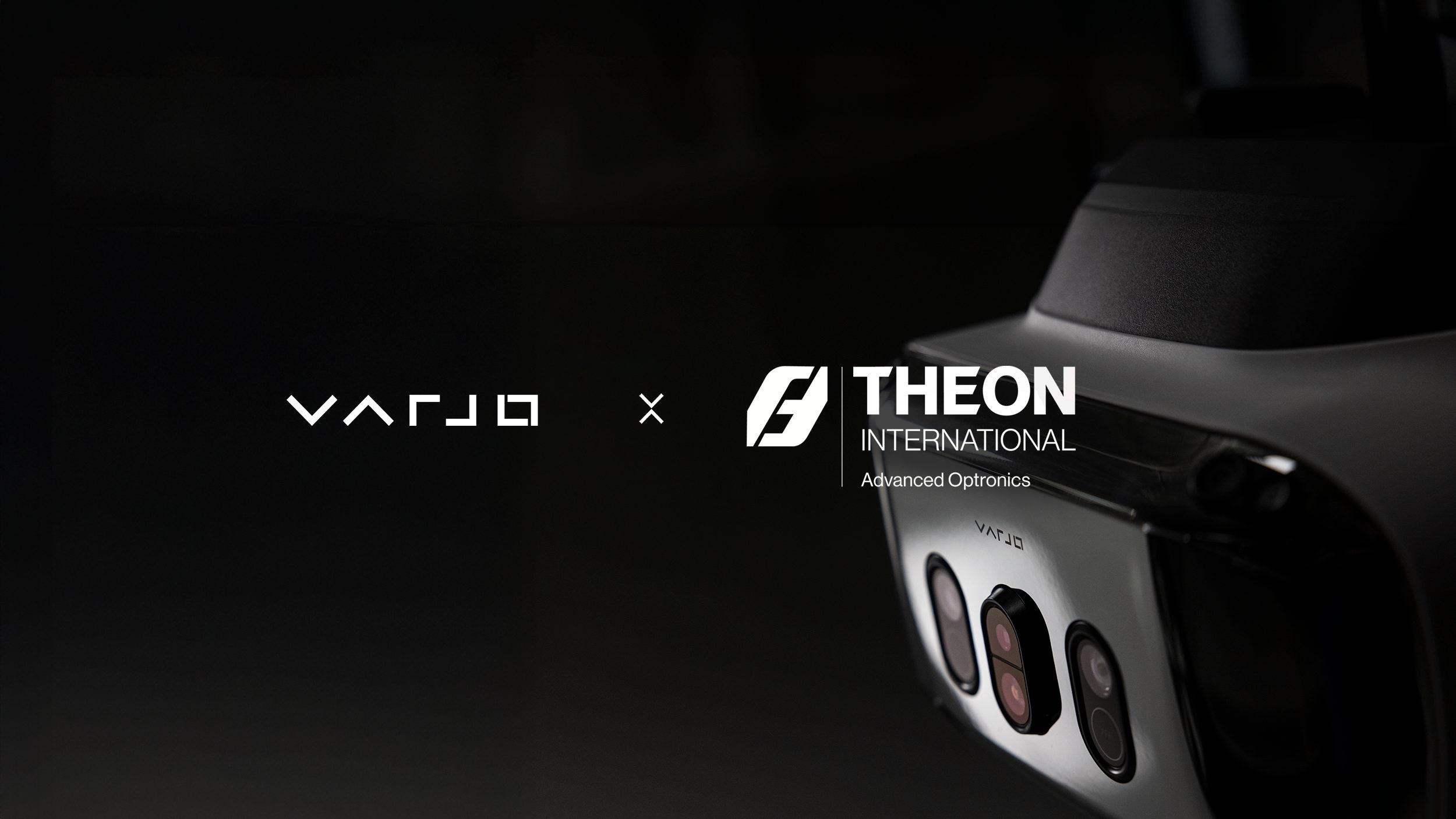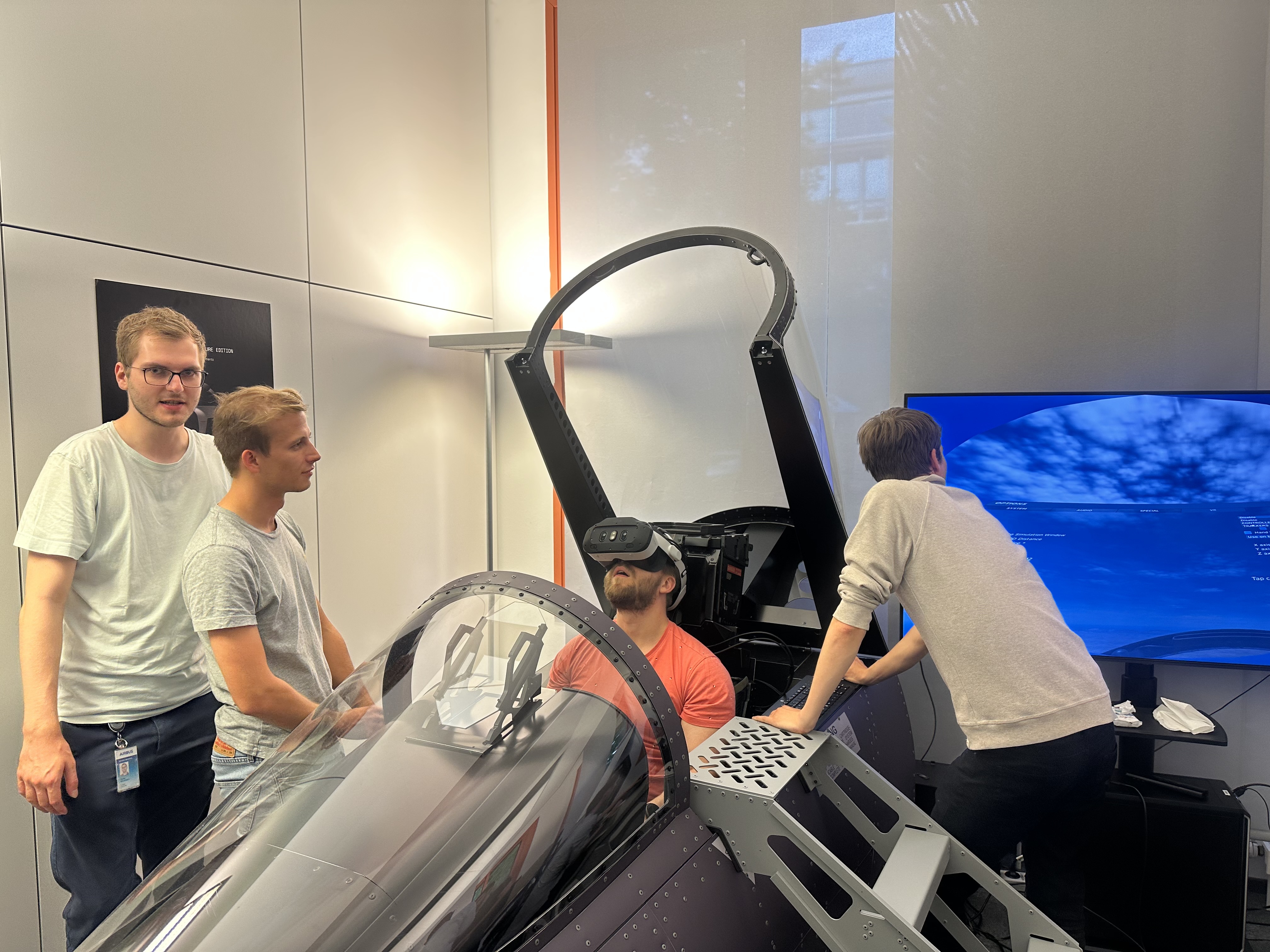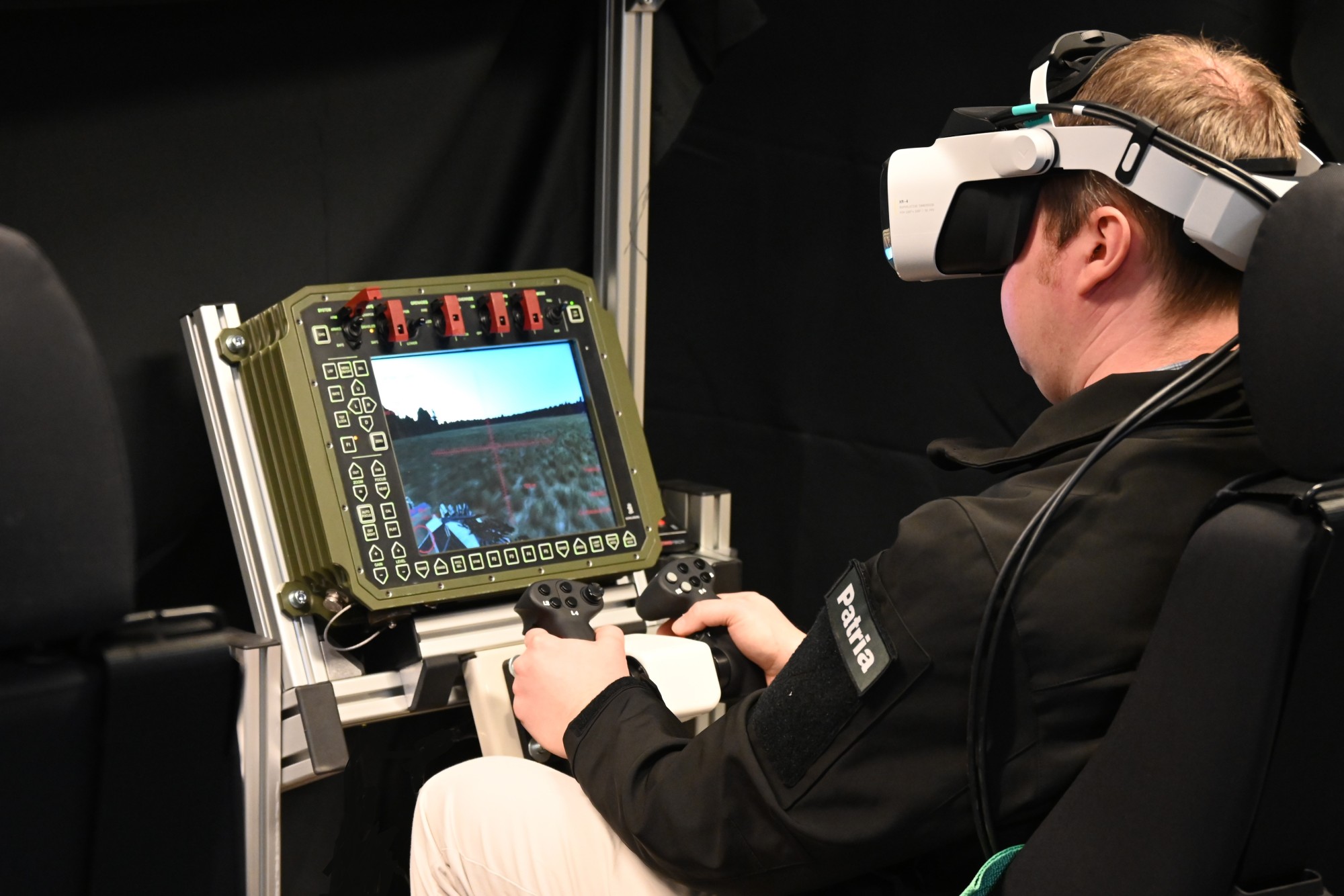
XR Vehicle Crew Training: How Patria is Advancing Tactical Cooperation and Driving Simulation with Mixed Reality
Patria’s mixed reality-based simulator offers training tailored to modern vehicle crew needs with improved immersion and a significantly smaller physical footprint than conventional display setups.
Patria is Finland’s leading provider of defense, security, and aerospace solutions, with a legacy that spans over a century. Established as a trusted partner to both domestic and international defense forces, Patria delivers cutting-edge technologies and comprehensive training systems that support critical operations across land, sea, and air domains.
Training the Modern Military Vehicle Crew
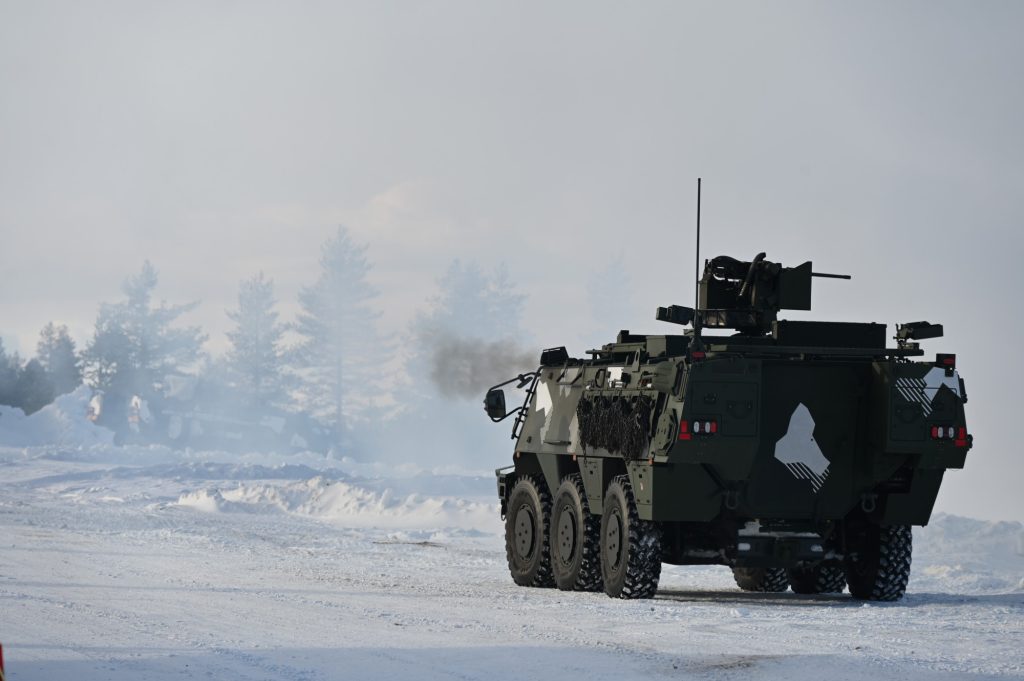 Military vehicle crew operations involve navigating and controlling a range of specialized land vehicles designed for combat, transport, reconnaissance, and support roles in demanding environments. Each vehicle type has distinct operational capabilities which require tailored handling skills and coordination procedures.
Military vehicle crew operations involve navigating and controlling a range of specialized land vehicles designed for combat, transport, reconnaissance, and support roles in demanding environments. Each vehicle type has distinct operational capabilities which require tailored handling skills and coordination procedures.
A typical military vehicle crew consists of a driver, responsible for maneuvering the vehicle; a commander, who oversees navigation, communication, and tactical decision-making; and a gunner, who operates the vehicle’s weapon systems. Crew members must function as a cohesive unit under pressure and make real-time decisions while reacting to changing battlefield conditions.
Traditionally, training for vehicle crews involves a combination of classroom instruction, physical mock-ups, full-scale simulators, and live field exercises. These methods often require large-scale infrastructure, substantial logistical resources, and real vehicles or replicas with operational weapon systems. While highly effective for hands-on experience, traditional training setups can be rigid, costly to scale, and limited in scenario variety. This makes it challenging to replicate diverse tactical environments or rapidly shift between vehicle configurations.
Tactical Readiness Without the Logistical Overhead
Recognizing the need for a more adaptive, cost-efficient, and space-conscious training platform, Patria set out to reimagine how military vehicle crews could be trained. The goal was to maintain simulation realism while minimizing logistical complexity.
“We wanted to create a product that fits into a classroom environment and can easily adapt into various configurations while keeping the costs low,” says Ilkka Ruuskanen, Product Manager at Patria.
This resulted in the development of Patria SHIFTR: a mixed reality-based simulator tailored to modern crew training needs. The solution includes training stations for each crew member: driver, commander and gunner, with a central focus on perfecting tactical cooperation within the team.
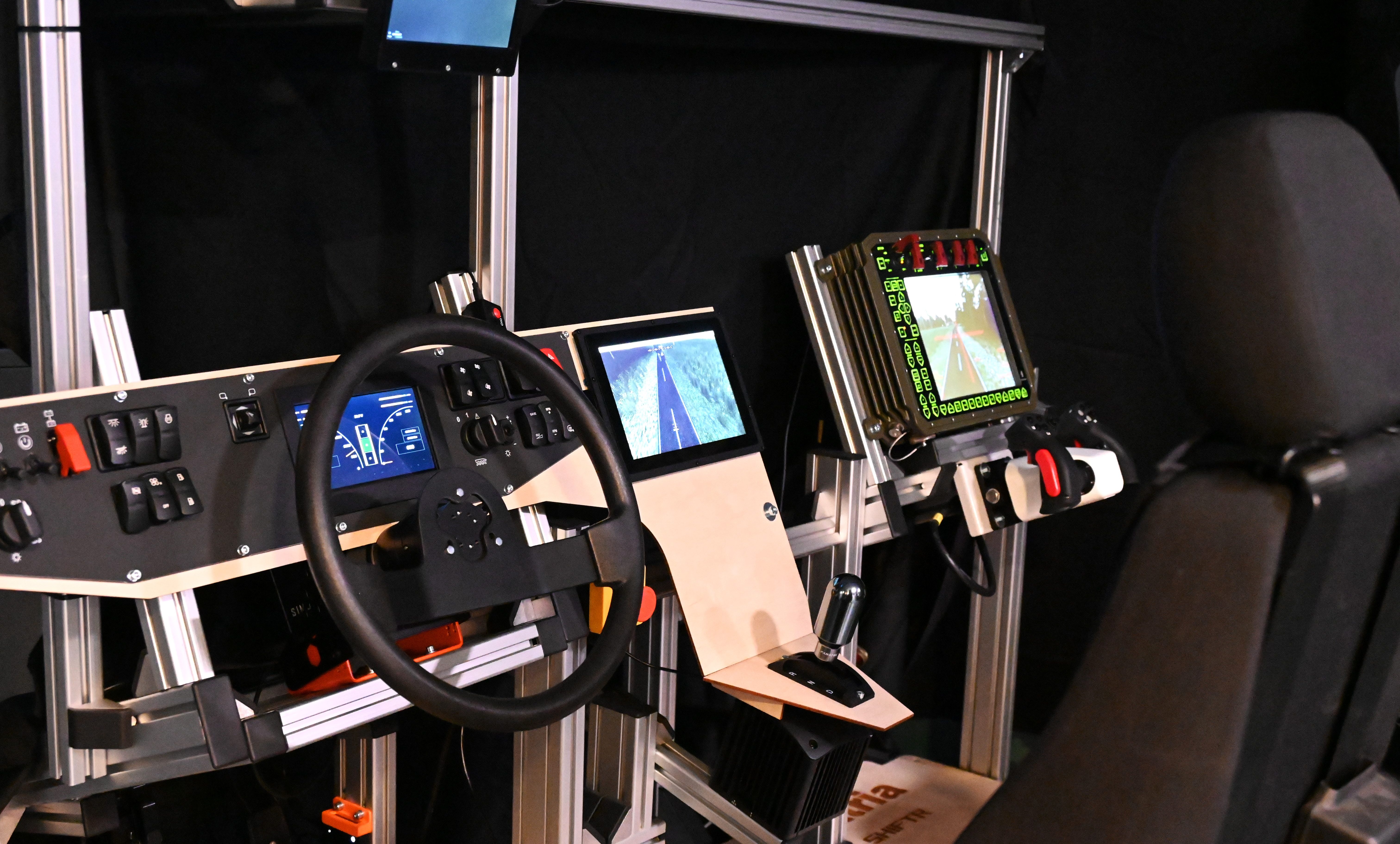
Secure Hardware, Smart Simulation
Designed with security and government use in mind, the simulator’s baseline configuration is fully offline-capable and built exclusively with components and software from trusted, reputable sources.
“Creating secure products for military is our daily business and SHIFTR is no exception,” says Ruuskanen.
The system integrates high-performance, gaming-grade COTS (commercial off-the-shelf) computers, Varjo XR-4 headsets, Simucube driver controls, and a tailored selection of Patria’s proprietary hardware and software.
At the heart of the virtual environment is Bohemia Interactive Simulations’ VBS4 platform, which is a widely adopted simulation system familiar to many of Patria’s defense customers.
Every Role Precisely Recreated with Mixed Reality
What sets SHIFTR apart is its intelligent use of mixed reality across every crew position. The training setup strikes a balance between physical and virtual elements: all components requiring interaction, such as steering wheels, control panels, or weapon interfaces, are physically present, while the surrounding operational context is fully virtualized. This hybrid approach ensures immersion without compromising realism or tactile feedback.
The driver sees a fully physical dashboard, complete with screens, buttons, steering wheel, and gear lever. The commander interacts with a real-world C4i interface and battle management system (BMS), with the configuration customizable based on each customer’s specific operational tools.
The gunner, meanwhile, operates real weapon system controllers embedded into the virtual landscape – for instance, the Kongsberg CORE™ simulator, which is precisely masked within the XR environment for authenticity.

Natural Immersion and Collaboration
When a trainee puts on the Varjo XR-4 headset, the SHIFTR system delivers an immediate and convincing sense of spatial presence. The immersive environment invites trainees to look around, explore their surroundings, and naturally begin interacting with the elements around them.
The learning curve is intuitive: each crew member quickly familiarizes themselves with their station and begins engaging with their teammates to plan and execute mission objectives collaboratively. “The process goes exactly how it would go in the real world and rarely needs any additional guidance. It’s how people operate naturally,” Ruuskanen explains.
SHIFTR leverages the capabilities of VBS4 tactical simulation software to offer a wide spectrum of mission scenarios. Exercises can range from straightforward driving drills of following the road to complex joint operations involving multiple networked simulators and constructive forces operating across land, air, and sea domains.
The flexibility of scenario design also allows instructors to control the level of cognitive load – for example, highlighting the difference between navigating under clear skies versus countering an ambush on a dark, rainy night.
For coordination and communication, SHIFTR integrates seamlessly with VBS radio systems, which allows for full control over radio channels and intercoms.
All voice communication is recorded to support detailed debriefs and after-action reviews. This ensures that not only the tactical execution but also the crew’s internal coordination can be assessed and refined over time.
Instructor Tools That Drive Performance
SHIFTR’s instructor station combines Patria’s custom IOS GUI with native VBS4 features to provide an intuitive training management interface. Instructors have access to real-time video streams from each station, can trigger malfunction simulations, and review historical performance data through automated charts.
This includes actionable insights such as ammunition and fuel savings, which can be valuable metrics for customers tracking environmental compliance or calculating return on investment.
With the Varjo XR-4 headset’s eye tracking, instructors can monitor exactly where each trainee is focusing during exercises. For example, they can simulate a malfunction and observe whether the trainee notices a warning indicator, then use a pointer to direct attention if something is missed.
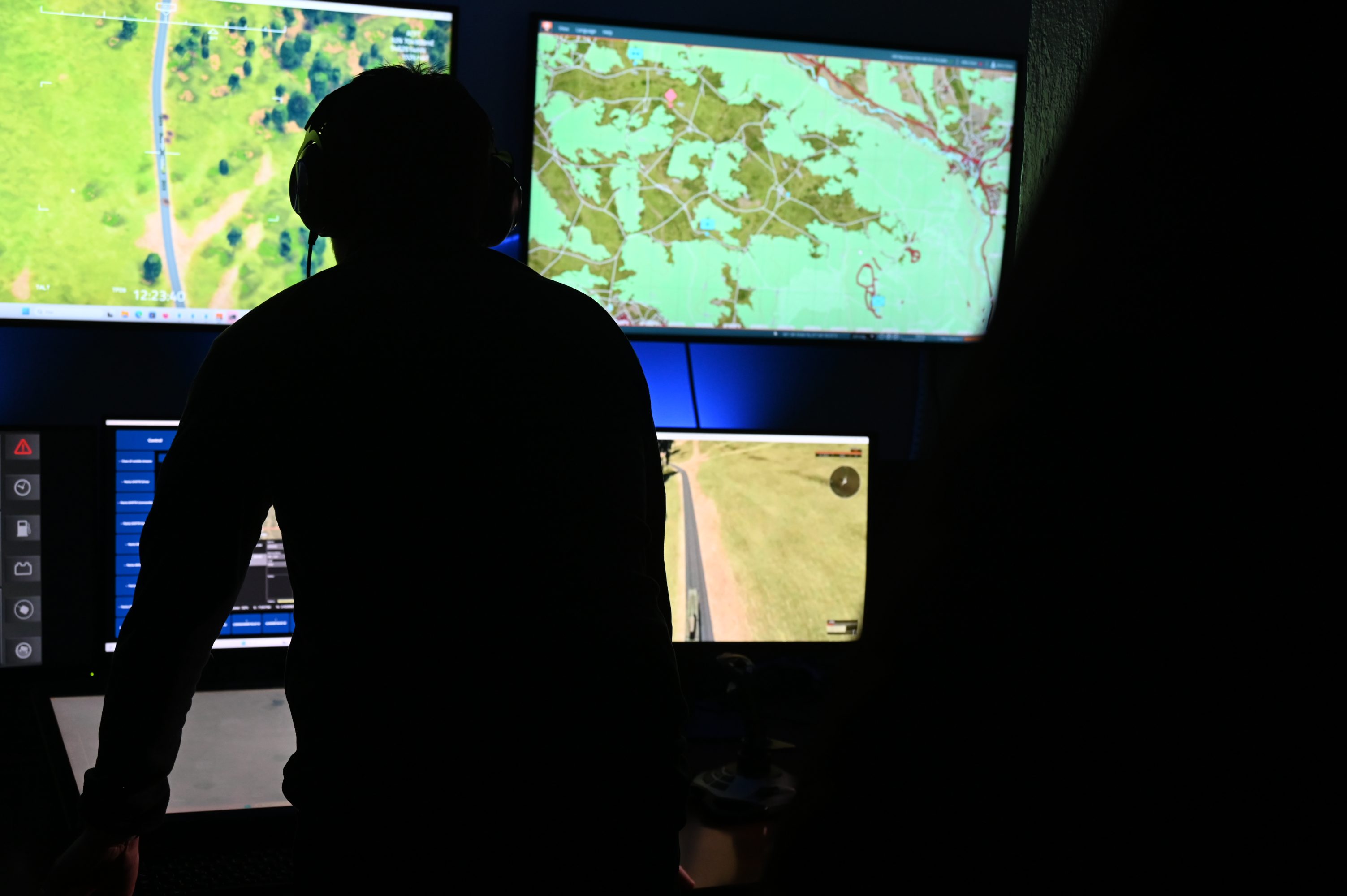
HEAT Analytics Platform
For organizations seeking to further gamify training and engagement, SHIFTR offers optional integration with VRAI’s HEAT analytics platform. HEAT assigns each trainee a profile to track progress over time and tailor training parameters. It can capture performance metrics of the customer’s choosing, such as attention focus, weapon hit percentage, and length of radio communication, turning raw scenario data into actionable insights. The result is a more engaging and accelerated learning process, complete with personal scorecards to encourage healthy competition in the classroom.
Varjo’s Fast Support, Features, and Targeted Fidelity in Every Detail
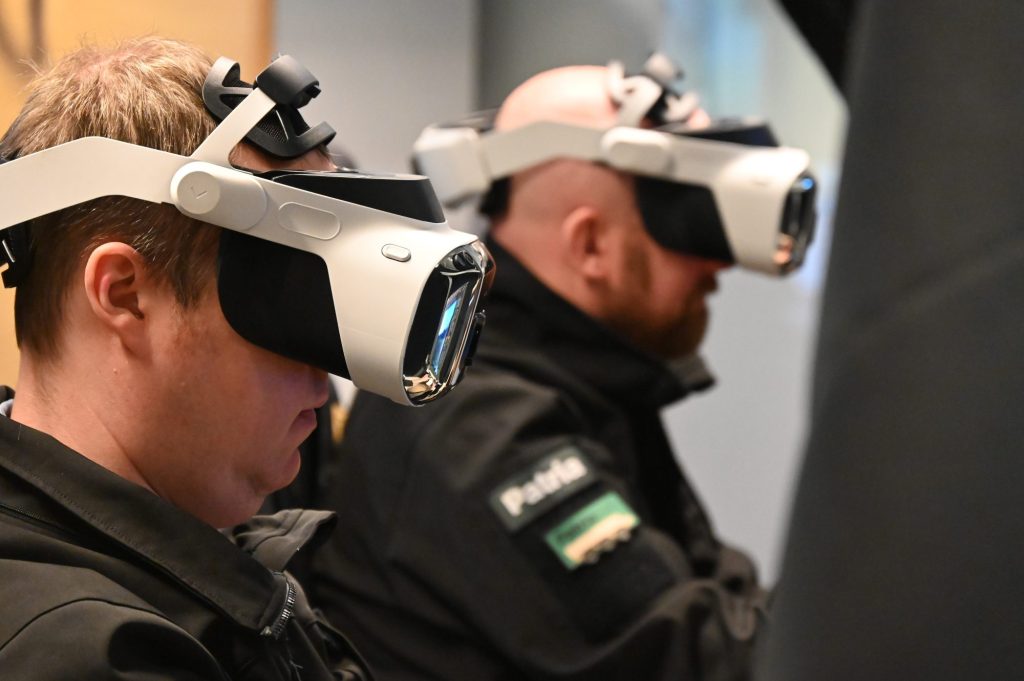 Ruuskanen emphasizes that while SHIFTR is positioned as an entry-level simulator, Patria was not willing to compromise on quality where it truly matters. “We aimed for targeted fidelity,” he explains. The decision to use Varjo XR-4 headsets was driven by their exceptional performance in high-fidelity mixed reality applications and Varjo’s strong presence in the military sector.
Ruuskanen emphasizes that while SHIFTR is positioned as an entry-level simulator, Patria was not willing to compromise on quality where it truly matters. “We aimed for targeted fidelity,” he explains. The decision to use Varjo XR-4 headsets was driven by their exceptional performance in high-fidelity mixed reality applications and Varjo’s strong presence in the military sector.
“Varjo is the best headset for high fidelity mixed reality applications with a large customer base in military. The headsets have a solid set of features for our needs out-of-the-box,” Ruuskanen says, highlighting built-in capabilities like the integrated speaker, microphone, and eye tracker. “With the XR-4 having a built-in microphone and speakers, we don’t need to worry about fitting any additional headphones on top of the XR headset.” He also notes the outstanding customer support from Varjo, with response times “sometimes within minutes.”
Beyond technical features, Ruuskanen sees XR technology as increasingly vital to the future of military training particularly in environments with limited physical space where traditional visual setups aren’t feasible. “XR will take more role in the training solutions as the technology and applications evolve.“

